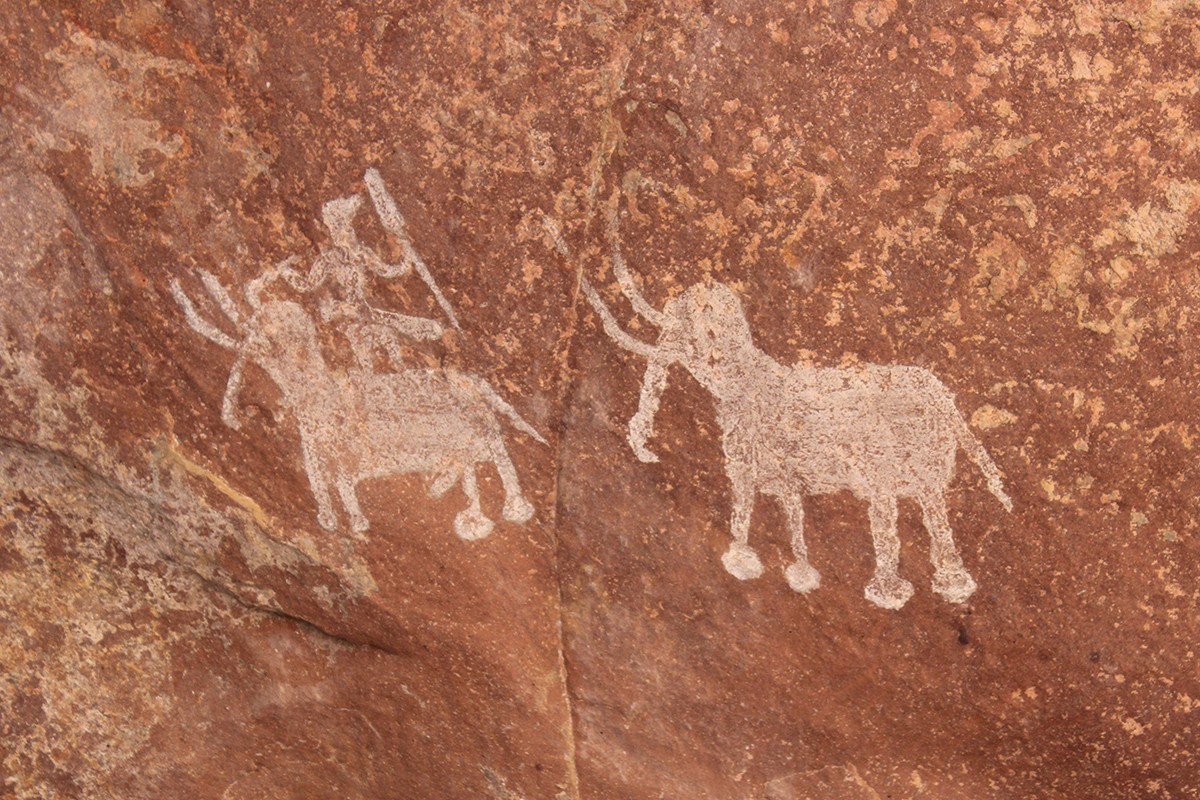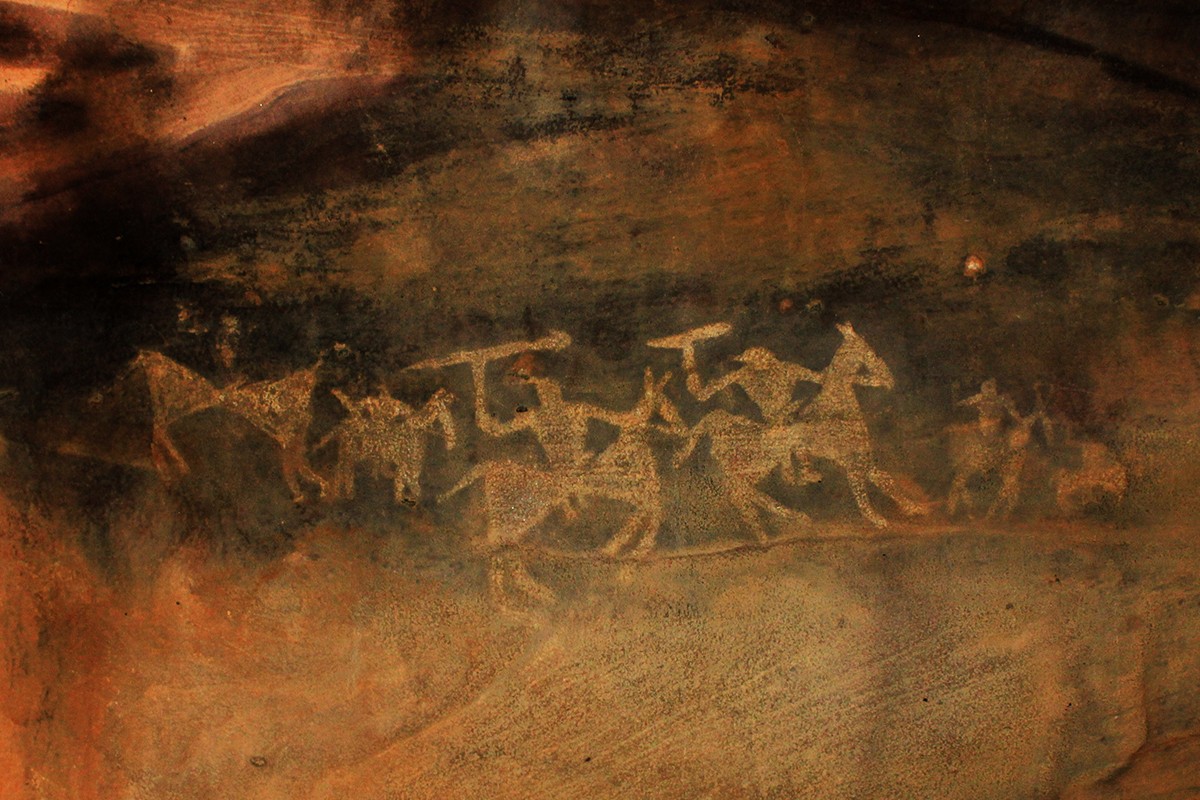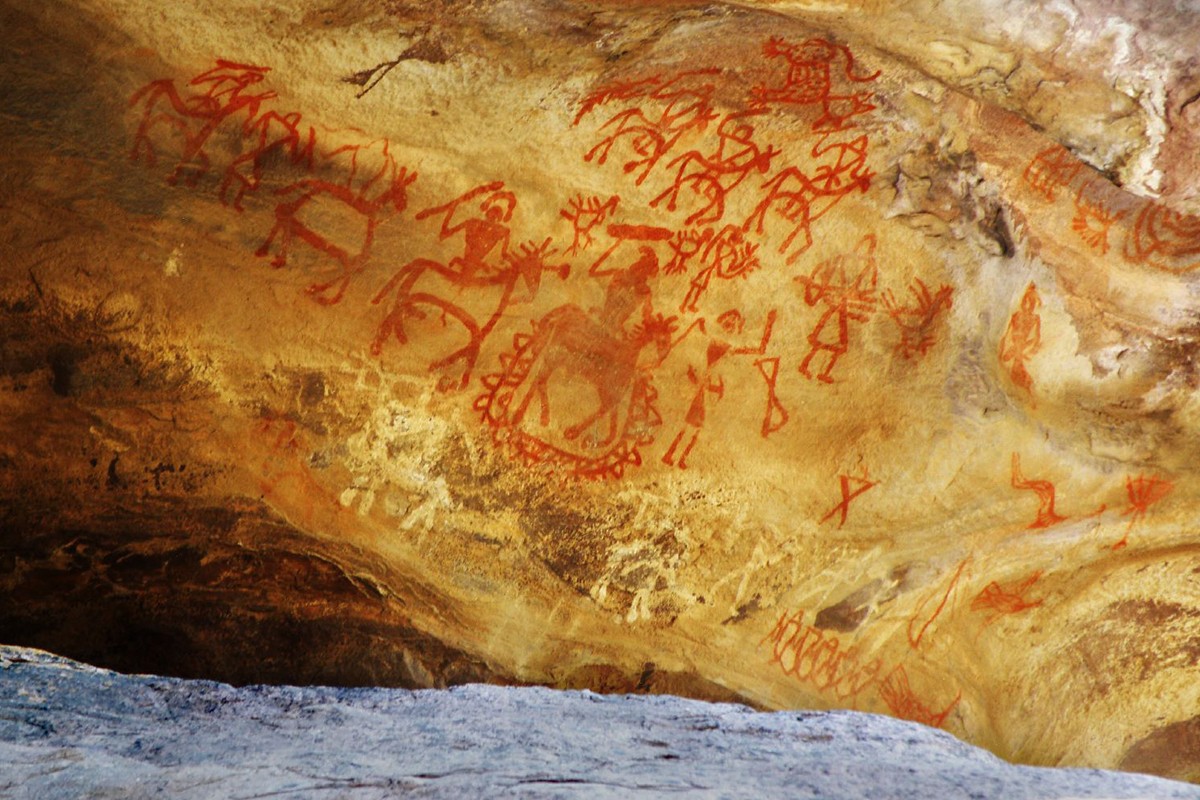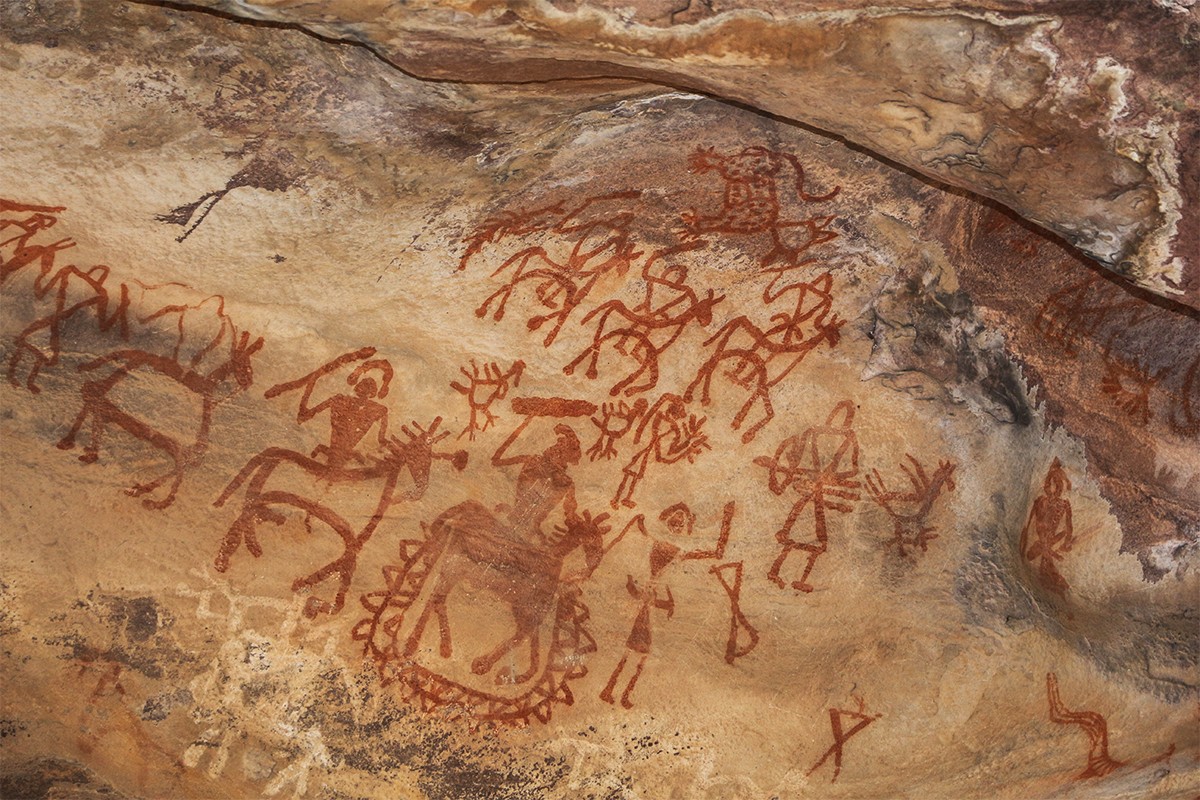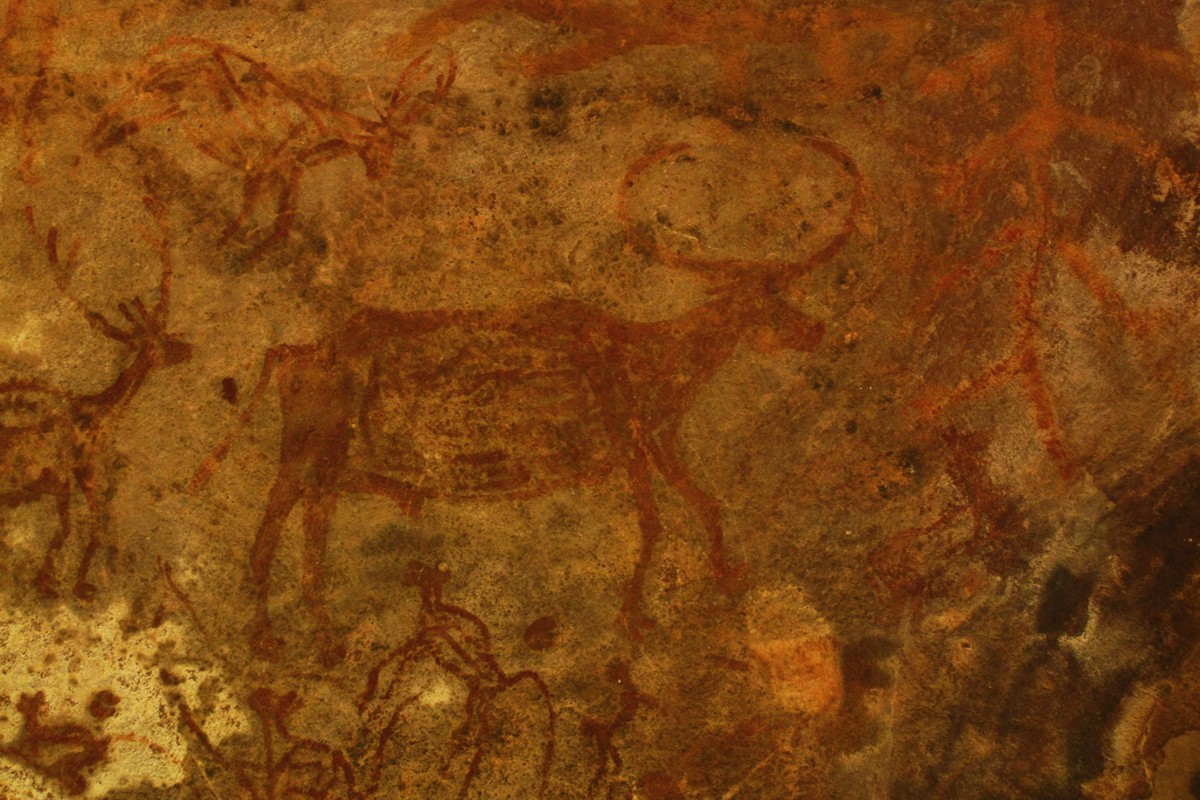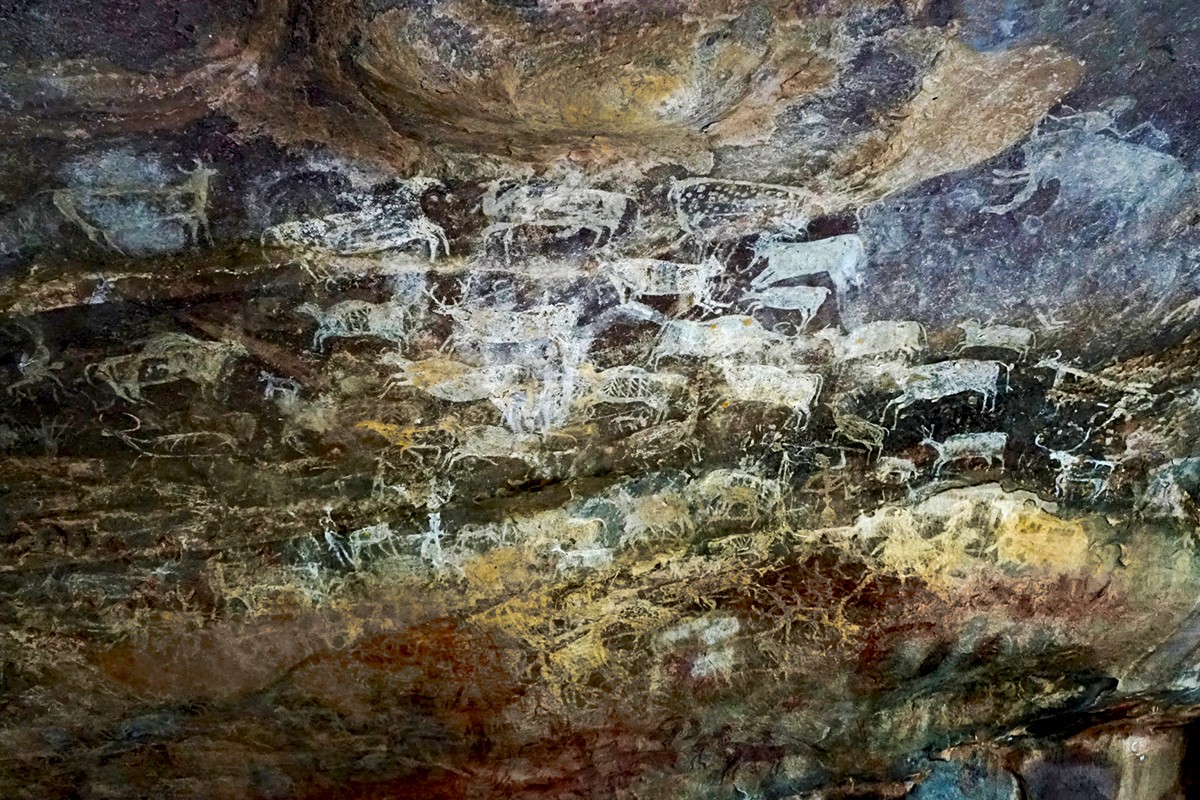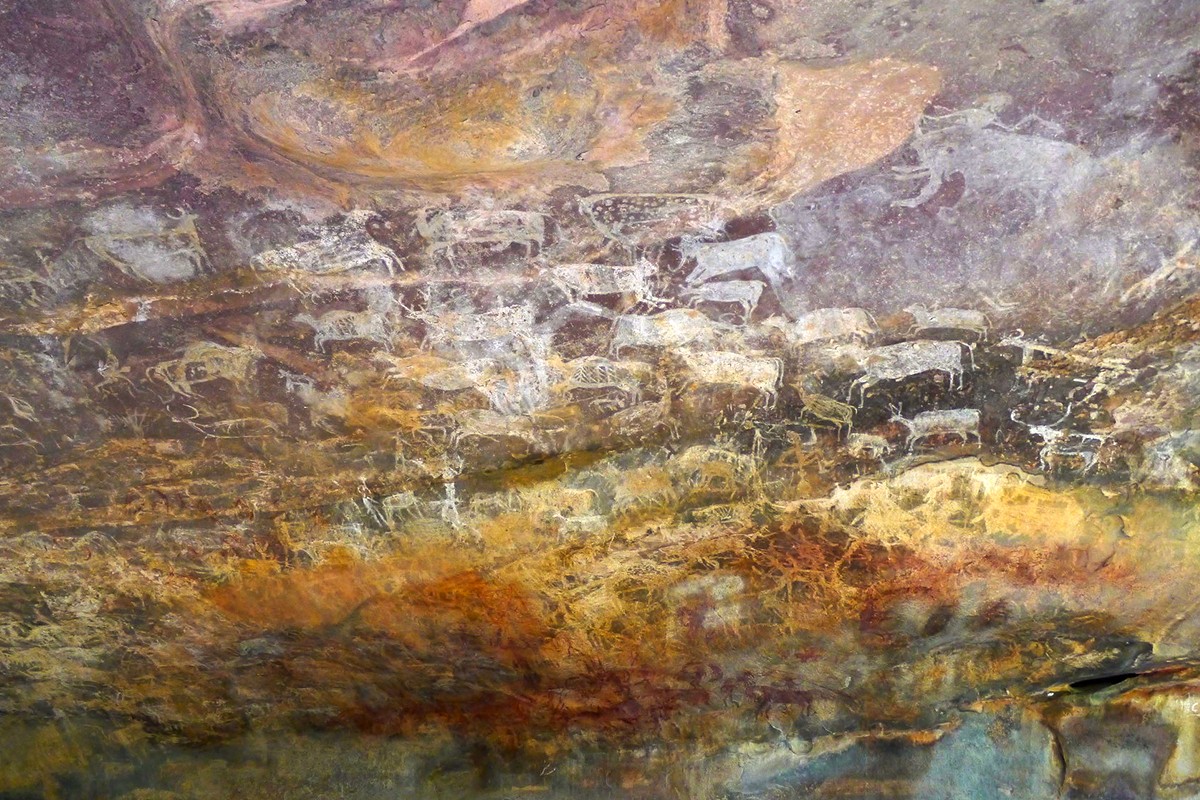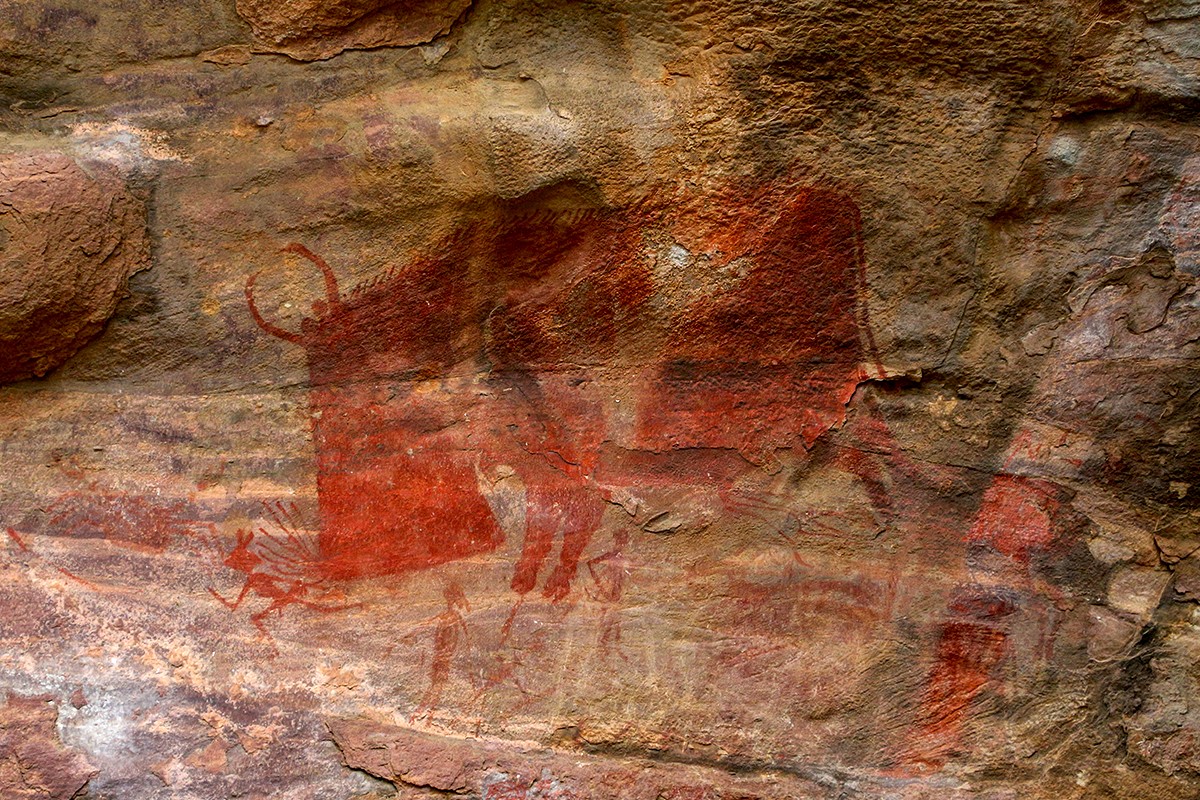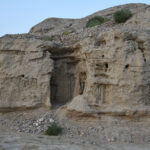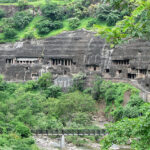Bhimbetka Cave Paintings
10000 BCE
Through the Upper Palaeolithic and Mesolithic periods, hunter-gatherer communities in central India created cave paintings. Some of these, preserved in the Bhimbetka caves in present-day Madhya Pradesh, are considered among the oldest rock paintings in the world. They include depictions of animals, anthropomorphic figures dancing and on horseback, and hunting scenes. The paintings are made from natural colours derived from vegetables, in shades of red, green, black, brown and white.
Other examples found in the Pachmarhi caves in present-day Hoshangabad district, Madhya Pradesh, feature similar subjects made primarily in red, with shades of white, black, yellow and brown pigments derived from minerals. Unlike the Bhimbetka paintings, these works show little to no evidence of overpainting or later additions.
Bibliography
Ali, Javeed, and Tabassum Javeed. World Heritage Monuments and Related Edifices in India. New York: Algora Publishing, 2008.
Bradshaw Foundation. “India Rock Art Archive.” Accessed September 21, 2023. http://www.bradshawfoundation.com/india/index.php.
Mathpal, Yashodhar. Prehistoric Painting of Bhimbetka. New Delhi: Abhinav Publications, 1984.
Misra, V. N. “The Prehistoric Rock Art of Bhimbetka, Central India.” Sahapedia, May 29, 2018. www.sahapedia.org/the-prehistoric-rock-art-of-bhimbetka-central-india.
Mithen, Steven J. After the Ice: A Global Human History, 20,000–5000 BC. Cambridge, MA: Harvard University Press, 2006.
Ray, Ranesh, and A. R. Ramanathan. Rock Shelters of Bhimbetka: Continuity through Antiquity, Art & Environment. New Delhi: Archaeological Survey of India, 2002.
UNESCO World Heritage Centre. “Rock Shelters of Bhimbetka.” Accessed September 21, 2023. http://whc.unesco.org/pg.cfm?cid=31&id_site=925.
Bradshaw Foundation. “The India Rock Art Archive.” Bradshaw Foundation . Accessed September 21, 2023. http://www.bradshawfoundation.com/india/index.php .
UNESCO World Heritage Centre. “Rock Shelters of Bhimbetka.” UNESCO World Heritage Centre . http://whc.unesco.org/pg.cfm?cid=31&id_site=925 .
Ali, Javeed, and Tabassum Javeed. World Heritage Monuments and Related Edifices in India . Algora, 2008
Mathpal, Yashodhar. 1984. Prehistoric Painting of Bhimbetka . Abhinav Publications.
Misra, V.N. “The Prehistoric Rock Art of Bhimbetka, Central India.” Sahapedia. www.sahapedia.org/the-prehistoric-rock-art-of-bhimbetka-central-india .
Mithen, Steven J. After the Ice: A Global Human History, 20,000–5000 BC . Weidenfeld & Nicolson, 2012
Ray, Ranesh, and A. R. Ramanathan. “Rock shelters of Bhimbetka: continuity through antiquity, art & environment. Management.” New Delhi: Archaeological Survey of India, 2002
Feedback 
This entry appears in
Art in South Asia
Visit Timeline
Associated Timeline Events
First Published: March 11, 2024
Last Updated: July 5, 2024



